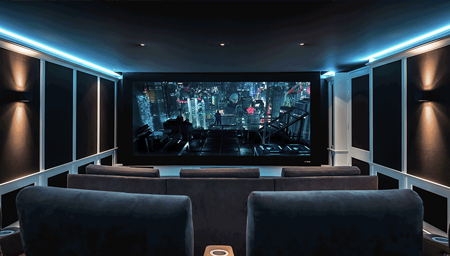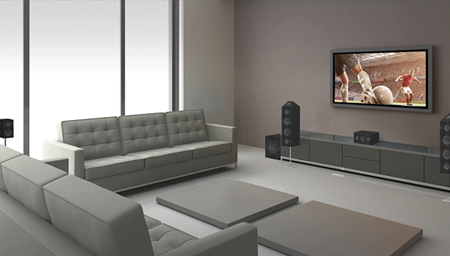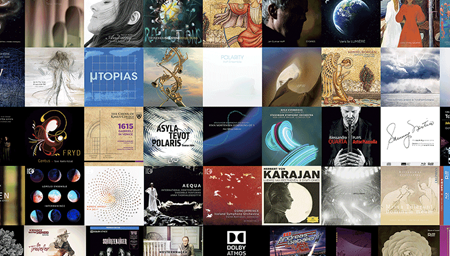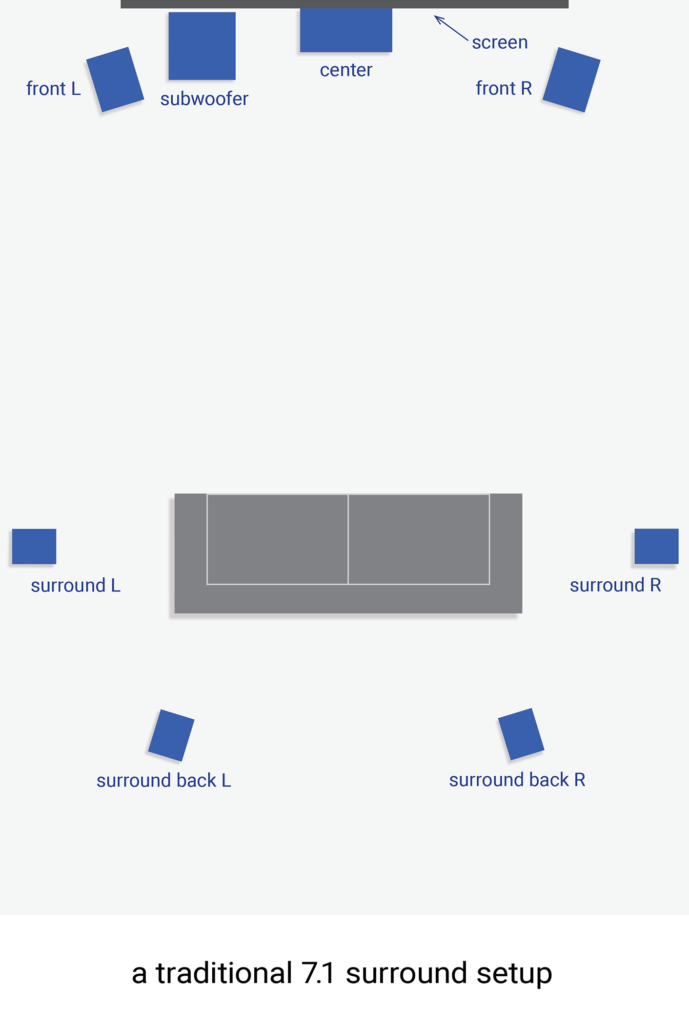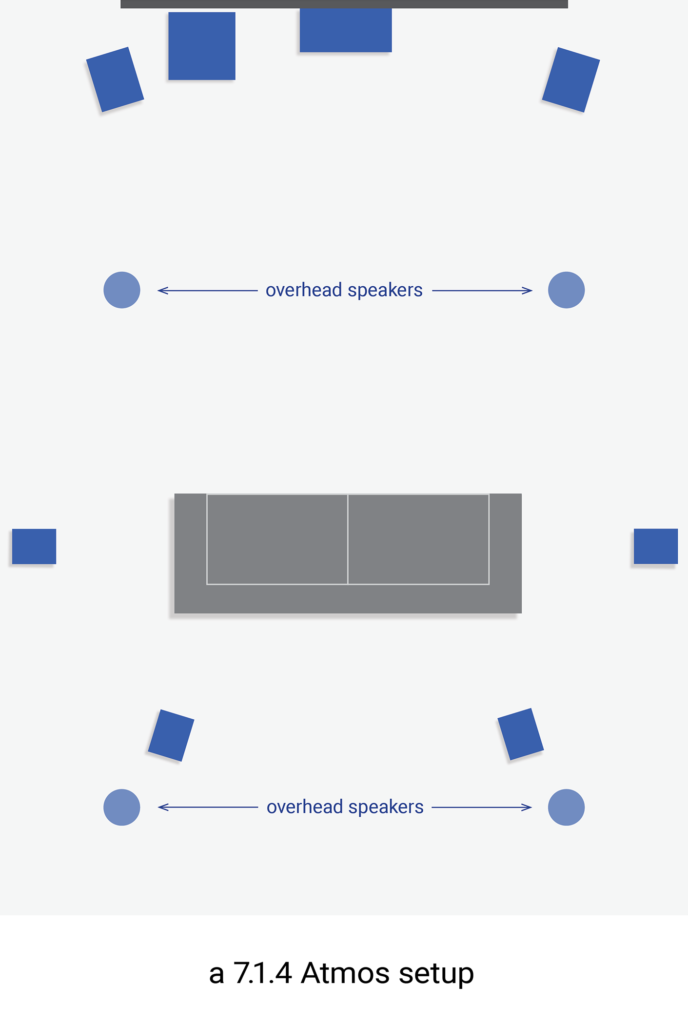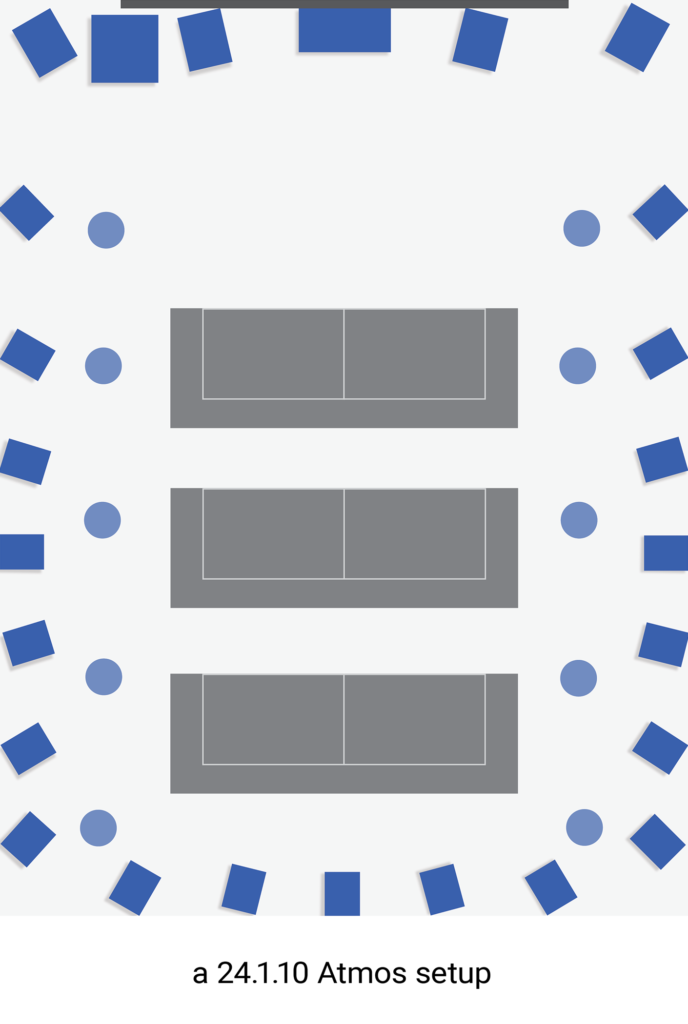Cineluxe Basics: Immersive Audio
A Brief History of Surround
To understand what is “next generation” about the latest surround formats, a bit of history is relevant. Surround sound was introduced back in 1940 in Disney’s Fantasia with something called Fantasound, but modern surround formats trace their roots to the 1970s when Dolby introduced Dolby Surround. Dolby regularly updated this technology for both cinema and home applications, and we saw this evolve into Dolby Pro Logic, Dolby Digital, Dolby Surround EX, Dolby Pro Logic II, and more. One of Dolby’s major cinematic surround competitors, Digital Theater Systems (DTS), introduced its system in 1993 for the release of Jurassic Park, and has introduced updates—and home solutions—similar to Dolby. (Those interested in taking a deeper dive will find the Wikipedia entry on “Surround Sound” fascinating.)
related articles
Sign up for our monthly newsletter
to stay up to date on Cineluxe
A tech-free guide to the next-generation surround sound formats
by John Sciacca
January 10, 2022
We realize our readers don’t want to get deep into the weeds with the technical bits, but part of our mission is to provide the basic information you need when not only making a decision about your home entertainment system but also when selecting what to enjoy on it. We use terms like “immersive audio” or “object-based audio” pretty frequently, so having an understanding of what those things mean and why they’re important will give you some context when reading other features and reviews.
The main thing to realize is that all previous versions of surround sound were channel-based, meaning that audio was mixed in the studio for a specific, fixed number of speakers. This started with four channels, then grew to five, and maxed out at a channel count described as 7.1. This included seven main speakers (front left, center, and right, surround left and right, and surround back left and right), with the “.1” designating a channel reserved for low-frequency effects such as explosions or dinosaur foot stomps (which are usually reproduced through a subwoofer).
Besides the fixed channel count, earlier surround formats positioned the sound in a horizontal array around the listener. And even though there might be multiple speakers along the side of a movie theater, they all served to deliver just two channels (left and right surround), meaning audio couldn’t smoothly and realistically move around the space, especially when you had a larger viewing area with multiple rows of seats.
The next-generation surround sound formats are often described as “immersive” or 3D audio because they can not only produce a 360-degree field of sound around you at ear level but also a bubble or canopy of sound overhead, creating a truly three-dimensional audio experience. Another major development of many next-gen surround technologies is moving away from channel-based to object-based mixing. Audio designers now have up to 128 “sound objects” that can be moved anywhere around the room, allowing sounds to be more precisely located. These objects also have size and weight, so a massive starship hovering overhead has a different feel—and plays out of more speakers—than, say, a tennis ball bouncing.
To precisely locate objects around the room, next-generation surround systems—both the soundtracks and the processing hardware—support far more discrete speaker locations, including multiple height speakers placed above listeners to create sounds originating and traveling overhead. Premium home installations can support up to 34 speakers in a 24.1.10 array (24 listener-level speakers and 10 height speakers, with the “.1” again referring to the subwoofer.)
While a full complement of 34 speakers will deliver the ultimate home experience, that isn’t always realistic or practical in every listening room. To accommodate systems with fewer speakers, modern audio processors have a channel renderer that creates a custom audio mix on the fly to remap audio objects to whichever speaker configuration—both number and location—is being used, meaning as little as possible is lost between the theatrical and home audio experience.
Dolby Atmos is the most common next-generation surround format by far, but you should also be aware of DTS:X, IMAX Enhanced, and Auro-3D.
Dolby Atmos
Atmos is supported by every major movie studio, and the number of movies, concerts, video games, and even music albums mixed for Atmos is growing all the time, with hundreds of titles available. Atmos content is available on Blu-ray and Ultra HD Blu-ray discs, titles downloaded from the Kaleidescape Movie Store, and from streaming services like Vudu, Netflix, HBO Max, Disney+, and streamed audio via Apple Music, Amazon Music, and Tidal.
The most common Atmos speaker layout at home is 7.1.4 (seven listener-level speakers, one subwoofer channel, and four height speakers). This provides an immersive experience in medium-size rooms with full 360-degree audio pans around the listener at ear level as well as good hemispherical coverage overhead, and is supported by nearly all equipment manufacturers.
An Atmos home theater system is far more flexible and adaptable than a channel-based one. With a channel-based approach, the number of speakers is fixed, but while Dolby Atmos will work fine with a basic seven-speaker setup, thanks to the ability of compatible receivers to remap the audio mix, adding more speakers will give you an even powerful experience. For larger rooms with three or more seating positions, high-end Atmos processors from manufacturers like Trinnov, JBL Synthesis, Storm Audio, and Steinway Lyngdorf can support up to 34 speakers, ensuring smoother panning and more even sound distribution across every seat.
DTS:X
Like Atmos, DTS:X is an object-based audio codec that aims to create multi-dimensional sound that moves around you like it would in real life. While DTS:X has a considerable following in movie theaters, there are significantly fewer titles available for home viewing compared to Atmos. DTS:X soundtracks can be found on some Blu-ray and Ultra HD Blu-ray discs as well as on the Kaleidescape Movie Store (with around 40 currently available); no streaming services currently support the format. Much like Atmos, virtually every receiver and processor manufacturer supports DTS:X so it isn’t a hardware choice you’ll need to worry about. While the format maxes out at a speaker count of 7.1.4, the recommended speaker layout and positioning is similar to Atmos, so they work well with each other.
DTS:X Pro
To address home theaters with greater speaker counts, DTS introduced DTS:X Pro in 2020, expanding the number of speakers to 30.2 channels including top height, top surround, and center front height locations, allowing for greater spatial resolution and realism. Existing DTS:X content already has the additional channel metadata embedded so any DTS:X movie you own is ready for the expanded channel count, with the DTS:X Pro processing being handled by a compatible audio processor. DTS:X Pro can be found on higher-end processors from Acurus, Denon, Marantz, and McIntosh and is supported by all of the premium brands, including Trinnov, JBL Synthesis, Storm Audio, and Steinway Lyngdorf.
IMAX Enhanced
DTS and IMAX have created a special variant of the DTS:X processing found in home audio systems to provide a soundtrack that delivers the deeper bass and greater dynamic range found in theatrical IMAX releases. IMAX Enhanced systems have a recommended speaker layout of 7.2.4 (seven listener-level speakers, two subwoofers, and four height speakers). When IMAX DTS:X processing is engaged (typically
triggered by a metadata “flag” in the content), the processor will automatically make adjustments to the settings to maximize the presentation, with the processor displaying some version of “IMAX DTS:X”.
IMAX Enhanced was announced in 2018 but has had a fairly slow rollout, with the format found on just a handful of Ultra HD Blu-ray discs. Owners of select 2021 Sony TVs have access to the largest selection of IMAX Enhanced content via Sony’s Bravia Core streaming service, and Disney+ recently started streaming IMAX Enhanced video content on select Marvel titles. Disney+ doesn’t currently support the IMAX DTS:X audio format but has announced it will do so in the future.
Auro-3D
Auro Technologies developed the Auro-3D immersive 3D audio format in 2005. Unlike Atmos and DTS:X, Auro-3D uses channel-based mixing, with three distinct audio layers with speakers placed at ear level, a height layer, and a top layer known as the “Voice of God.” Home Auro-3D speaker systems can support configurations from 9.1 to 13.1 speakers, dividing the side, rear, and ceiling channels into “zones,” allowing for placement of sound at discrete points along the listening-room walls or ceiling as well as within the room itself. Auro’s recommended speaker placements for the height layer differ from both Dolby and DTS, along with its unique implementation of the Voice of God speaker.
Due to a movie-theater partnership with Barco, Auro-3D is employed in theaters throughout Europe but has yet to gain a foothold in the States, and most of the Blu-ray movie discs featuring an Auro-3D soundtrack are only available in Europe. But the format is receiving a lot of attention in the music industry, with several high-resolution releases available from labels like Pure Audio. Auro-3D also uses the company’s “Auro-Matic” upmixing, which is becoming a popular way to listen to traditional stereo recordings in a multichannel speaker environment due to the natural sound quality and ambience the upmixer can extract. Auro isn’t as widely supported by hardware manufacturers but it can be found on premium brands like Trinnov, JBL Synthesis, Storm Audio, and Steinway Lyngdorf as well as on many Denon and Marantz receivers. It will soon make its way to higher-end Yamaha models via an upcoming firmware update.
Probably the most experienced writer on custom installation in the industry, John Sciacca is co-owner of Custom Theater & Audio in Murrells Inlet, South Carolina, & is known for his writing for such publications as Residential Systems and Sound & Vision. Follow him on Twitter at @SciaccaTweets and at johnsciacca.com.
© 2023 Cineluxe LLC




